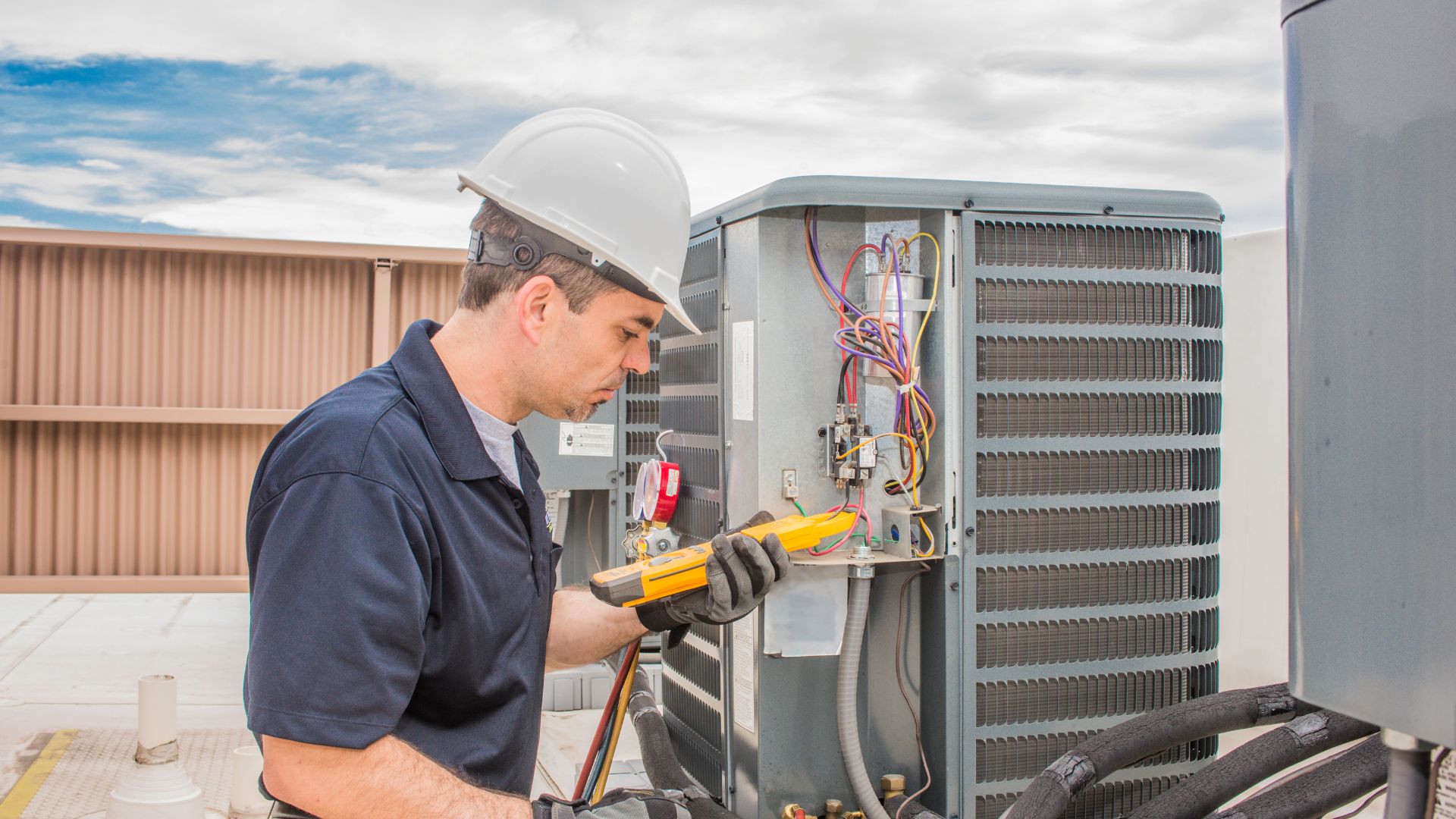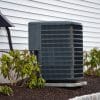We’ve all experienced a power outage at some point in our lives. It’s not uncommon for the electricity to go out during a storm or high winds, leaving us in the dark and without any power.
But what happens when your HVAC system won’t turn on after the power comes back? It can be frustrating and uncomfortable, especially if it’s cold outside.
In this blog post, we’ll discuss what you can do to troubleshoot your HVAC system so that you can get it up and running again quickly. From checking your thermostat to calling a professional, we’ve got you covered!
1. Check your thermostat
One of the first things you should do if your HVAC system won’t turn on after a power outage is to check your thermostat. It may have been reset during the outage and needs to be reprogrammed. Start by setting your thermostat to “off” and then turning it back on again. See if it responds by turning on or displaying any error messages.
If there are no visible issues with the display, try adjusting the temperature settings. Make sure that both heating and cooling modes are set correctly depending on what you need at that moment. If this doesn’t work, check that your thermostat is properly connected to your furnace or air conditioning unit.
In some cases, a faulty battery could be causing problems with your thermostat’s functionality. Remove the front cover of your thermostat and replace its batteries with fresh ones before testing it again.
If none of these solutions work, you might need an HVAC expert in diagnosing and fixing any underlying issues related to your HVAC system’s components such as wiring connections between them or malfunctioning sensors within one of those parts!
2. Check your circuit breakers
The next step in troubleshooting your HVAC system after a power outage is to check your circuit breakers. When the power goes out, it’s possible that one of the breakers tripped and needs to be reset.
First, locate your circuit breaker panel. This is typically found in a basement or utility room. Open the panel door and look for any switches that are not aligned with the others – these may indicate a tripped breaker.
If you find a tripped breaker, switch it off completely before turning it back on again. Sometimes simply resetting a tripped breaker can solve an issue with your HVAC system not turning on after a power outage.
It’s important to note that if you continue to experience issues even after resetting any tripped breakers, there could be something else going on with your HVAC system. In this case, calling in a professional technician would be the best course of action.
Remember – safety first! Always exercise caution when dealing with electricity and don’t hesitate to call in an expert if you’re unsure about anything related to circuit breakers or electrical systems.
3. Check your furnace
When your HVAC system fails to turn on after a power outage, the furnace is also one of the first components you should check. The furnace plays an integral role in heating up your home and regulating temperature, so it’s important to ensure that it’s working correctly.
Start by checking the power supply to your furnace. Make sure that any switches or breakers connected to your furnace are turned on. If they’re not, then this may be the reason why your HVAC won’t turn on.
Next, inspect your furnace filter for any clogs or debris buildup. A dirty filter can restrict airflow and cause issues with starting up the unit.
If there don’t seem to be any problems with the power supply or filters, then take a look at the pilot light itself. Ensure that it is ignited properly and produces a steady flame.
In some cases, if none of these solutions work, there could be an issue with more complex internal parts of your furnace such as ignition sensors or burners. It’s best to contact a professional HVAC technician who can diagnose and repair the furnace safely.
Remember that regular maintenance checks scheduled once every six months will help prevent potential issues from happening in case another power outage occurs again in the future!
4. Check your entire HVAC system
Once you’ve checked your thermostat and circuit breakers, it’s time to move on to your HVAC system itself. The first step is to check the power switch for the unit, which should be located near the outdoor compressor.
Make sure that this switch is turned on and that there are no obvious signs of damage or wear. If everything seems okay at this point, then it may be time to take a closer look at the actual components of your HVAC system.
One useful tool for doing so is a multimeter, which can help you test individual parts like capacitors and transformers. Of course, if you don’t feel comfortable working with electrical components in this way, then it’s always best to call in an experienced professional who can handle the job with ease.
Another common issue that may cause your HVAC system not to turn on after a power outage is a tripped fuse or breaker within the unit itself. To fix this problem, simply locate the breaker box within your outdoor AC unit and reset any tripped switches accordingly.
5. Call a Professional
If you’ve checked your thermostat, circuit breakers, furnace, and HVAC unit and still can’t seem to get your system up and running after a power outage, it’s time to call in the professionals.
HVAC systems are complex machines that require specialized knowledge and expertise to diagnose and repair. Attempting DIY repairs on an HVAC system can lead to further damage or even injury if proper precautions aren’t taken.
When choosing a professional HVAC technician, be sure to do your research beforehand. Look for licensed and insured technicians who have experience working with the specific make and model of your system.
Once you’ve found a reputable technician, schedule an appointment as soon as possible. Delaying repairs can lead to more extensive damage down the line.
During the repair process, don’t hesitate to ask questions or voice any concerns you may have. A good technician will take the time to explain their diagnosis and recommended course of action in plain language.
Remember: investing in professional repairs now can save you money on costly replacements later on.
Conclusion
If your HVAC won’t turn on after a power outage, it’s important to check your thermostat, circuit breakers, furnace, and HVAC units. These are the most common culprits for why your system may not be turning back on.
However, if you’ve gone through all of these steps and still can’t get your HVAC working properly again, it’s time to call in a professional. They’ll be able to diagnose and fix any underlying issues that may be preventing your system from functioning as it should.
Remember that regular maintenance of your HVAC system is key to keeping it running smoothly and efficiently. Be sure to schedule routine tune-ups with an experienced technician who can identify potential problems before they become major issues.




